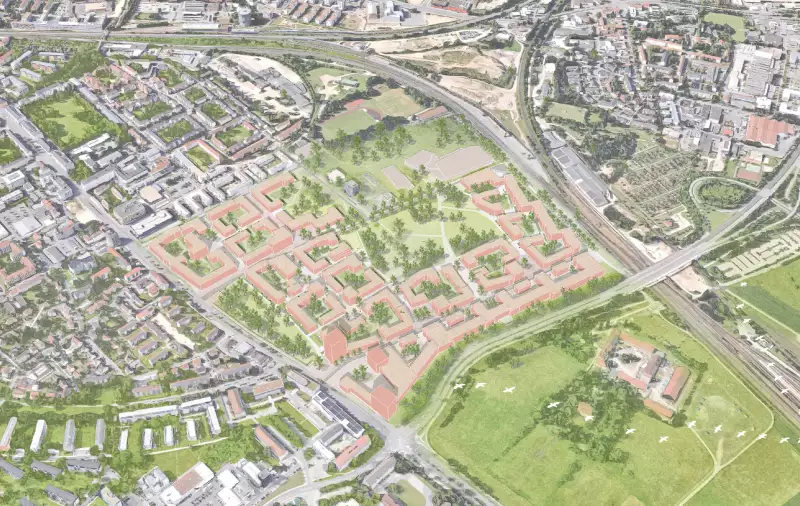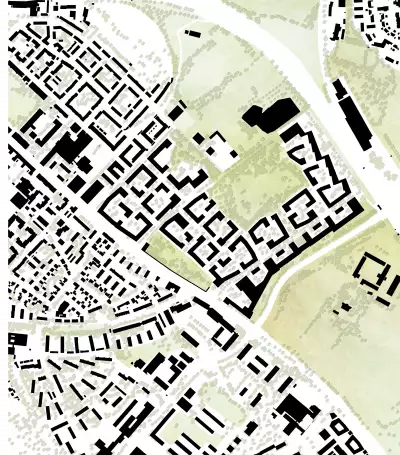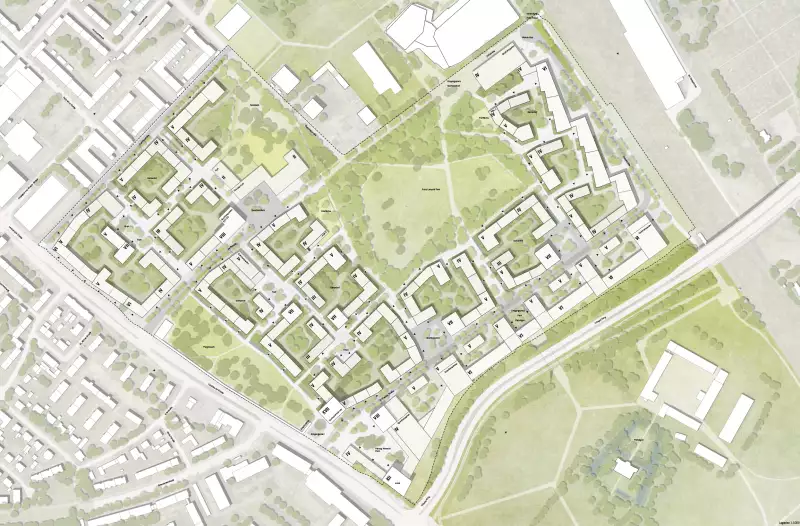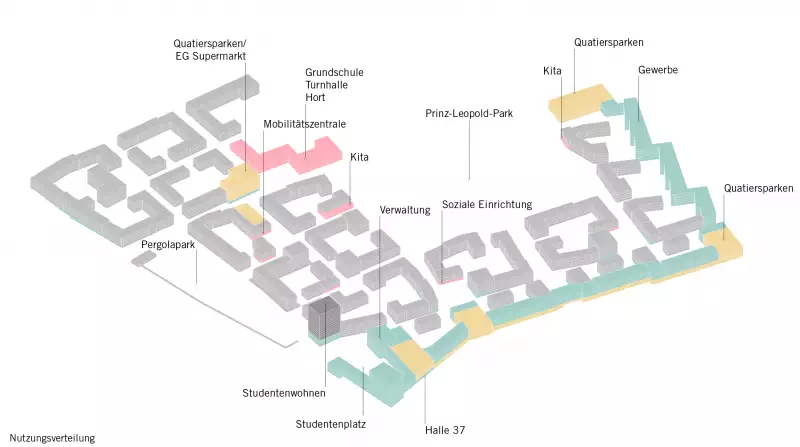Ideas competition Prinz Leopold / Pioneer Barracks
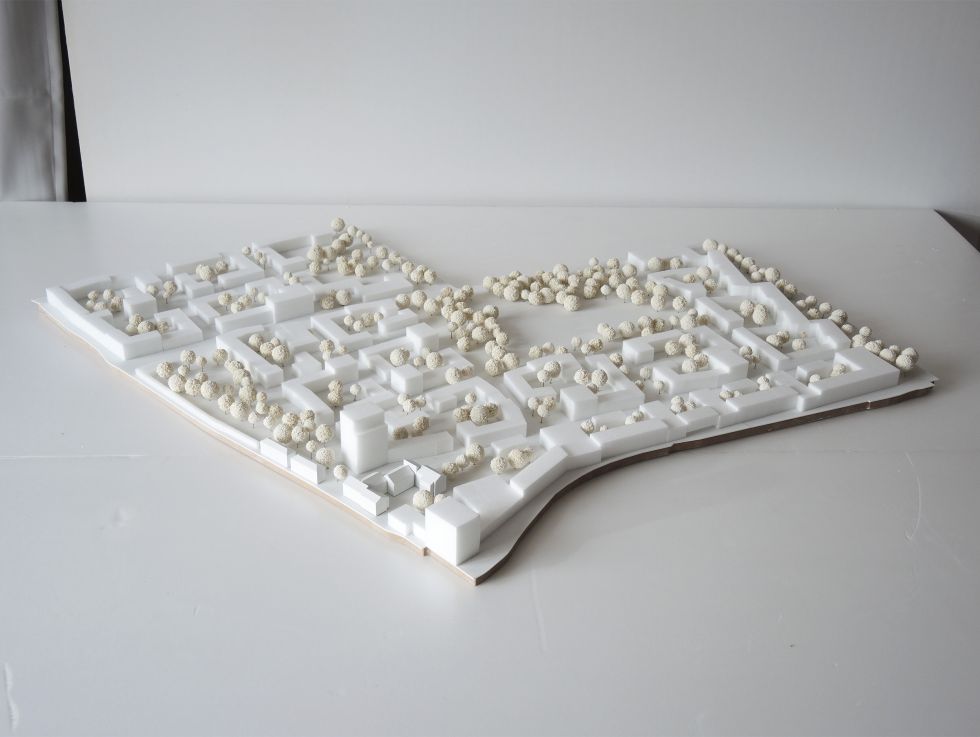

| Location | Regensburg |
|---|---|
| Area | 329.755 m2 GF |
| Housing Units | 1.531 WE |
| Client | Stadt Regensburg |
| Landscape Architects | grabner huber lipp landschaftsarchitekten und stadtplaner partnerschaft mbb |
| Date | 2020 |
| Awards | 3rd prize |
| Publication | Competitonline - 10.08.2020 |
| Project Team | Patrick von Ridder, Peter Scheller, Dorian Cani, Charlotte Reith |
On the southern outskirts of Regensburg, on the site of a former barracks, a new district is to be developed.
At the intersection of supra-regional traffic routes, in the vicinity of agricultural fields and close to the Pürkelgut, the new district forms a kind of condensed garden city. A productive "Parkstadt Regensburg".
An important point of reference is created as a city entrance on Landshuter Allee and a striking landmark along the Odessa Ring and on the railway line. At the same time, the cycle route connects the new district with the university at a short distance. The planning area is characterised by four very different references and edges.
The new district fits around a central, generous green space. Individual, open, courtyard-like quadrangles with staggered building heights enclose the central neighbourhood squares. These form manageable neighbourhood places. In addition, public, spatially defined places are created along the central streets and defined entrées to the central Prinz Leopold Park. Inside the neighbourhoods, sequences of squares offer an exciting sequence of different urban spaces. The newly created public open spaces are an important link to the existing open space qualities in the neighbourhood.
The Pürkelgut in the south, in the transition to the agricultural landscape, is connected to the new urban structure via a generous subway and led to the central neighbourhood park, the Prinz-Luitpold-Park. This new green space is the heart of the new quarter and complements the sports park in the north-east and the pergola park in the west with differentiated spatial impressions and uses.
Picturesquely shaped, car-free residential streets extend all the way to the neighbourhood park. Different public uses create urban situations in the neighbourhood. A distinctive band wraps around this spatial structure of small-scale neighbourhoods, accommodating commercial and service uses that protect the residential quarters, or robust forms of housing.
Car traffic is consistently skimmed early and organised into neighbourhood garages that function simultaneously as mobility hubs, market halls and collective market halls.
FROM THE JURY REPORT:
"With well-dimensioned block structures grouped around a park, the Prinz-Leopold-Park, an urban setting succeeds that creates an exciting spatial structure and a memorable urban structure despite the simplicity of the basic module. The sequence of residential streets and small neighbourhood squares creates a varied public space. (...)
The central idea of the work is the spatial connection of the Sportpark Ost north of Zeißstraße with the new district park. For this purpose, the Zeißstraße will be cut off. In the future, its trafficability will end at the neighbourhood square before the junction with Guerickestrasse. This will enable undisturbed footpath connections between the leisure centre and the residential quarters. (...)
Noise protection is provided by a closed city edge to the Odessa-Ring and offset building blocks to the railway. Building arrangement and building height ensure sufficient protection against noise pollution. Commercial uses facing the railway are plausibly arranged. The proposed mixed-use area facing the main noise source Odessa-Ring, on the other hand, appears to be feasible only with great effort. For the implementation of the noise protection development, the authors interfere strongly with the existing buildings. Neither Hall 37 nor the existing housing development for asylum seekers is taken into account in the urban development concept. The high point at the intersection of Odessa-Ring, whose location is understandable from an urban planning point of view, also interferes with existing buildings.
The jury positively assessed the preservation of the high-quality tree population on Landshuter Straße. An arcade is proposed as an edge and spatial demarcation from Landshuter Strasse. Even with a proposed height of approx. 4.5 m, the associated noise protection effect is comparatively low. For the adjacent residential development, the green border to the street has a positive influence on the residential environment.
The design and orientation of the Prinz Leopold Park, on the other hand, is viewed controversially: The strong edge greening creates a spatial distance to the residential buildings and the orientation of the open space does not follow the main direction of the fresh air corridor that crosses the neighbourhood in a north-south direction. The fact that the park is hardly defined spatially on its northern side means that urban development potential remains unused.
(...)
All in all, the work makes a good contribution to an identity-forming and economically feasible neighbourhood. However, the praised qualities are counterbalanced by serious problems, especially in dealing with the existing buildings and traffic access, the elimination of which would require substantial interventions in the present concept."
